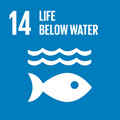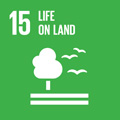- Docente: Sonia Silvestri
- Credits: 8
- SSD: GEO/04
- Language: Italian
- Moduli: Clara Armaroli (Modulo 1) Sonia Silvestri (Modulo 2)
- Teaching Mode: In-person learning (entirely or partially) (Modulo 1); In-person learning (entirely or partially) (Modulo 2)
- Campus: Bologna
- Corso: Second cycle degree programme (LM) in Geology for Sustainable Development (cod. 6050)
-
from Oct 08, 2024 to Dec 12, 2024
-
from Oct 03, 2024 to Dec 18, 2024
Learning outcomes
Starting from the fundamentals of geomatics and the theoretical bases relating to the main characteristics and functioning of Geographic Information Systems and the most useful/used plugins in the field of geosciences, the course provides the basic tools for carrying out data processing in a GIS environment (using the open-source software QGIS). The knowledge acquired in the GIS field will be integrated with basic knowledge of Remote Sensing, to allow the student to master the use of vector data and raster data from different sources and platforms, with practical applications typical of geomorphology. The main learning objectives include: 1) understanding and analysis of vector and raster data; 2) (photo)interpretation of remotely sensed images and data (e.g. aerial photos, multispectral data, etc.); 3) acquisition of basic skills in image processing and analysis of remote sensing data from satellites and drones (including hyperspectral, LiDAR and radar data); 4) knowledge of the main vector and raster databases at regional, national and European scale and use of the data contained therein to carry out different types of processing, with particular reference to spatial analyses and the production of thematic cartography; 4) construction of vector files and their attributes, also using measurements taken directly in the field; 5) integration of pre-existing data and information with newly developed datasets for the production of an original cartography. The theoretical skills acquired during the lectures are accompanied by a practical part in which different types of qualitative-quantitative elaborations are presented, with guided "hands on" sessions. The student can then test his/her competences through increasingly more complex exercises to reach a level of competence that allows him/her to use the tools made available by GIS in various areas of geosciences. At the end of the course, students will develop a project that will allow them to apply the skills acquired during the course.
Course contents
Prerequisites
Basic skills and knowledge of cartography and coordinate systems. Basic skills in using georeferenced data. Basic knowledge of QGIS and/or ArcGis (this prerequisite is recommended but not mandatory as the course will provide the necessary tools to make the class skills uniform).
Module 1 (5 CFU)
Module 1 is divided into a teaching unit of 3 CFU that provides the basic knowledge and 2 CFU of practical laboratory activities.
The teaching and practical lessons cover the following topics:
- Fundamentals of Geographic Information Systems (GIS) and basic knowledge of cartography and coordinate systems;
- Main GIS tools and their characteristics; understanding and analysis of vector and raster data;
- knowledge of the main vector and raster databases at regional, national and European scale and use of the data contained therein to carry out different types of processing, with particular reference to spatial analyses and the production of thematic cartography;
- Photointerpretation of remotely sensed data with specific reference to applications in the field of geomorphology;
- Construction of vector files and their attributes, also using field measurements;
- Integration of pre-existing data and information with newly developed datasets for the production of an original cartography.
Module 2 (3 CFU)
Module 2 is divided into a teaching unit of 2 CFU that provides the basic knowledge and 1 CFU of practical laboratory activities.
The teaching and practical lessons cover the following topics:
- Introduction to the basic theory of remote sensing and the principles of electromagnetic radiation.
- Fundamentals of digital image processing.
- Overview of sensors used in remote and proximal sensing, and satellite missions.
- Applications to real cases and problem-solving.
Readings/Bibliography
The .pdf files of the lectures will be made available at the end of each lesson. Students will also find bibliographic references within the course slides.
Teaching methods
The course consists of lectures and laboratories that will include the utilization of the QGIS and SNAP or SAGA or similar software.
Assessment methods
At the end of the course the students will develop a project which will allow them to apply the skills acquired during the course in both Modules. The verification of the skills acquired consists of an oral exam in which the project must be presented and discussed, and which will also include theory questions.
Teaching tools
PC, video projector, PowerPoint presentations.
Office hours
See the website of Sonia Silvestri
See the website of Clara Armaroli
SDGs


This teaching activity contributes to the achievement of the Sustainable Development Goals of the UN 2030 Agenda.
